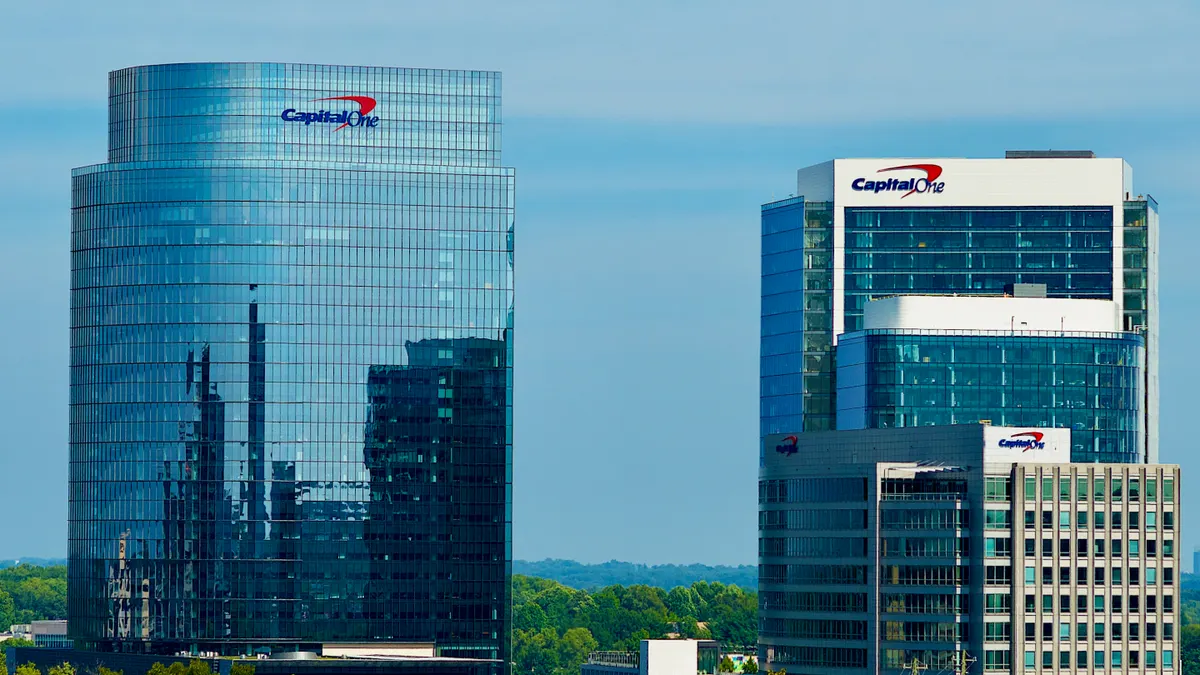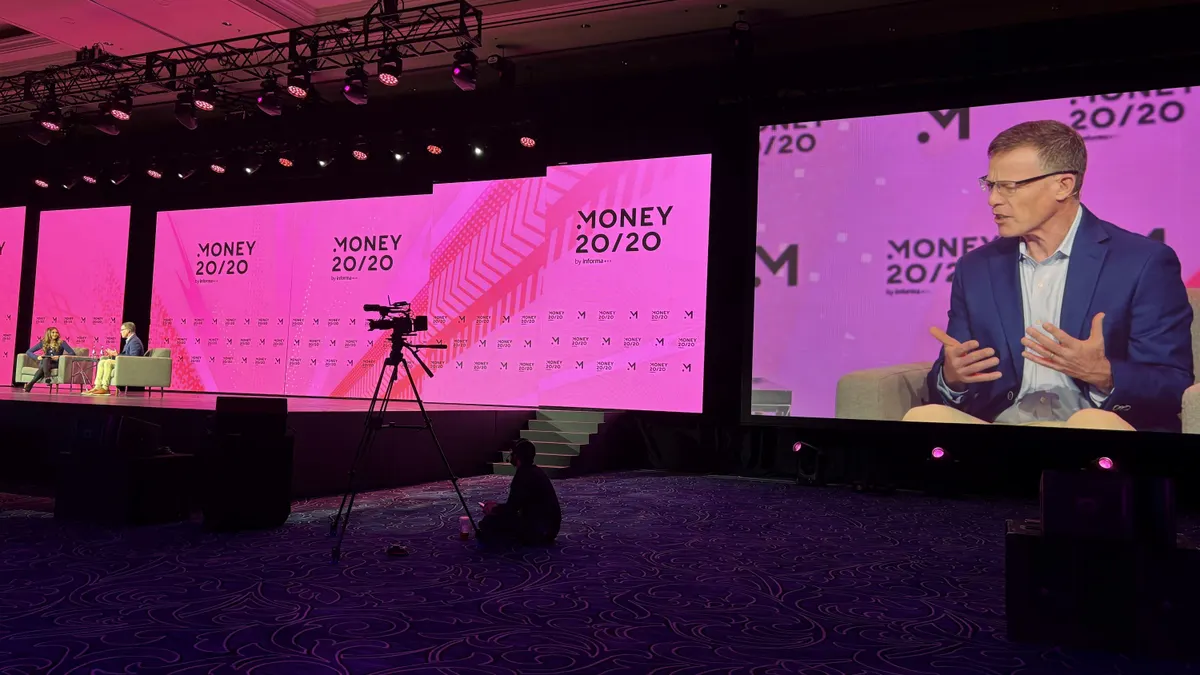Three months after disclosing a $4.3 billion loss, Capital One’s profit jumped 80% year-over-year in the third quarter. Its revenue surged 53%. And its net interest income rose 54%, according to an earnings report released Tuesday.
Beyond that, the bank announced a plan this week to repurchase as much as $16 billion of its own common stock – and to increase its dividend to 80 cents per share, from a previous 60 cents, beginning this quarter.
The bank also revised its capital management plan to reflect a long-term capital need of 11%, compared with its current common equity tier 1 ratio of 14.4%.
"I am struck by the opportunity all around us, but I also know what it took to get here,” Capital One CEO Richard Fairbank said Tuesday on an earnings call. “That was investing what it takes to be in a position to win."
Fairbank cited a desire Tuesday to invest more in technology such as artificial intelligence and to broaden the company’s exposure to "new growth vectors," including auto lending.
The latter reference may come as a slight surprise to some observers, given market caution over banks’ exposure to a pair of bankruptcies in the auto sector.
JPMorgan Chase and Fifth Third last week each disclosed charge-offs of around $170 million in connection with bankrupt subprime auto lender Tricolor. Truist and Jefferies, meanwhile, clarified their own exposures to bankrupt auto parts supplier First Brands.
Fairbank, for his part, said Capital One is on “high alert,” monitoring the influence of private credit on consumer finance. Auto loan and credit-card delinquencies, however, fell in the third quarter, allowing the bank to release $760 million in loan-loss reserves. The bank reported a net charge-off rate of 1.54% in its $82 billion consumer auto loan portfolio for the third quarter.
Capital One did flag a coming "brown out" in loan growth as the bank adjusts its Discover portfolio – cutting out debt holders with high balances and borrowers with comparatively low credit scores.
Costs from the integration of Discover’s business are trending upward – from $639 million in the second quarter to $951 million in the third. Fairbank said the bank expects to see a greater return on revenue synergies in the fourth quarter ahead of the integration wrapping up early next year.
Still, the addition of Discover is leaving its mark on Capital One’s balance sheet. Purchase volume for the bank, writ large, jumped 39% in the third quarter. But that figure would be a 6.5% increase without counting Discover’s contributions.
Likewise, ending loan balances surged 70% above 2024’s third quarter, across the company. But that increase would have been 3.5% counting only pre-acquisition Capital One business.
By the numbers, Capital One reported $3.19 billion in profit in the third quarter – well over the $1.78 billion it disclosed in the same three-month period of 2024. Revenue charged ahead to $15.36 billion. And net interest income surged to $12.4 billion.
The bank’s provisions for credit losses stood at $2.71 billion, far below the $3.8 billion analysts estimated.
And, in a telltale sign of the market’s comfort with the Discover tie-up, Capital One’s stock price has jumped 40% since regulators signed off on the acquisition in April.
"Our opportunities are many and they are large, but so too is the investment to get there,” Fairbank said Tuesday. “But these investments will also be the basis for our sustained growth and strong returns over the longer term."













